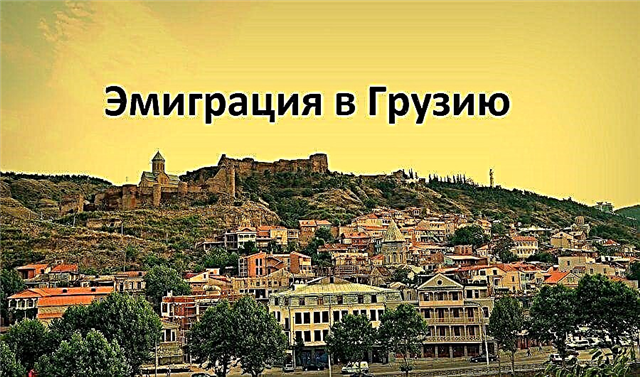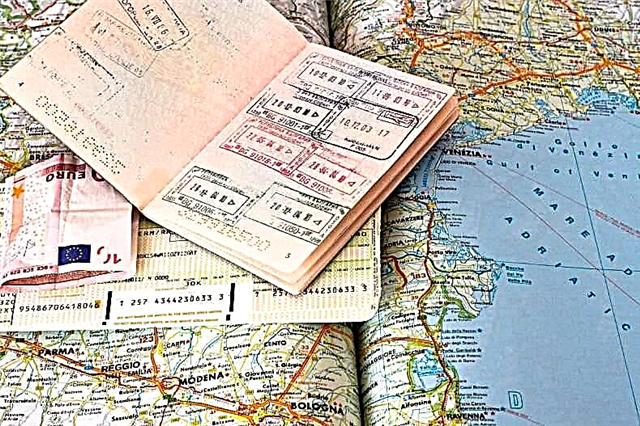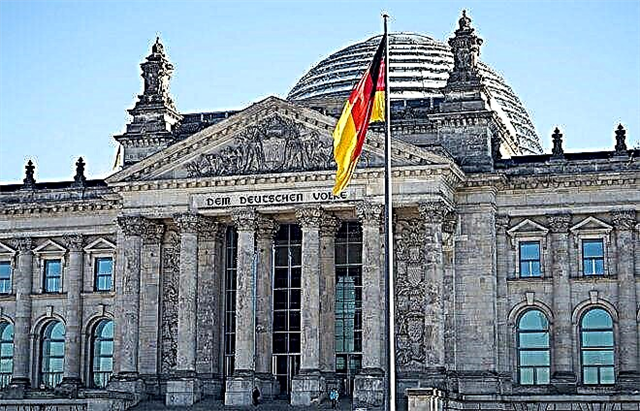The Reichstag is a symbol of Berlin and Germany, a building that has survived several eras and regularly appears at the center of significant political events in the country and the world. Once the legislators of the Weimar Republic and the Third Reich sat in the Reichstag. Later, it was over this building that an assault red flag was raised - an event that is considered the unofficial end of World War II. Today the Reichstag in Berlin is open to the public, guides conduct excursions there. In addition, the parliament, renamed into the Bundestag, continues to be used for its intended purpose - German deputies sit inside the building.

History of Parliament
The idea of building such a structure belongs to Otto Bismarck, the iron chancellor of Germany. The new parliament, according to his idea, was to become the personification of the strength and power of the state.
Construction began in 1884, when William the First ruled the empire. Paul Vallot was able to propose a project that satisfied the customer, deciding to give the building an architectural splendor and grandeur with the features of the Italian Renaissance. The construction lasted for ten whole years.
Parliament was used for its intended purpose during the empire and the Weimar Republic, until the infamous fire in 1933, after which the building was practically in ruins.
The arson, committed, according to the official version, by a communist, became the reason for the restriction of civil liberties by the Nazis who came to power.
After this incident, the Reichstag was used for propaganda and military purposes. The building underwent two reconstructions - in the 60s and 90s of the last century. The deputies returned to the restored parliament in the 90s.

In the post-war period, the Reichstag ended up in West Berlin and until the unification of the country served as an observation point, allowing guests to see how people live on the other side of the wall.
Architecture and structure of the building
During the reconstruction, the basement was converted into a technical one; everything necessary for the secretariat was placed on the first floor; everything above is reserved for governing structures.
The already majestic building acquired another mesmerizing detail - a glass dome, which was designed by the architect from Great Britain Norman Foster, the author of the famous cucumber skyscraper in London and the highest bridge in Europe - Viaduc de Millau in the south of France.
The Berlin Bundestag acquired a glass dome during a 1999 restoration. Tourists who find themselves on the roof have the opportunity to see a gorgeous panorama of the city.
The observation deck, to which guests climb the spiral staircase, is at an altitude of 40 to 49 meters, depending on the floor.
There is a restaurant nearby, which receives guests daily from 10:00 to 00:00 (break from 16:30 to 18:30).
The design of the Reichstag dome also has a practical function. In the center of the building, the architect designed a cone, and in it there are many rows of mirrors, they direct the sunlight into the parliamentary hall. Thus, the designers relieved the administration of the need to turn on the electricity again on clear days. By the way, all the energy necessary for the work of the Bundestag is obtained from environmental sources.
Citizens interested in history know that during the events of 1945, the Soviet military left many inscriptions on the walls of the Reichstag, dedicated to the victory. Later, the city authorities allowed to paint over only obscene and Nazi statements, and the rest were left. Nowadays, every tourist can see 159 inscriptions, most of which are located inside the premises.
Opening hours and order of visit
The Reichstag is today a key attraction in Berlin. On sightseeing days, the building is visited by at least 8,000 tourists. Someone wants to touch the history, while someone wants to see the modern city, going up to the observation deck.
To get to the Reichstag, a tourist needs to fulfill two requirements - choose a day for an excursion when parliamentarians do not sit in the building, and register in advance on the official website.
The registration process does not take much time. The tourist is offered to enter the full name, date of birth and the number of citizens wishing to visit the Reichstag. An invitation letter will be sent to the indicated e-mail address, it will be a pass ticket to the parliament.
The Bundestag is open daily from 8.00 to 00.00, tourists are admitted every 15 minutes until 22.00 inclusive.
Tours are free, no tickets are required, but at the entrance the security requires proof that pre-registration has been made. If the online booking has not been made, there is a service center for those wishing to visit the Bundestag, located directly behind the Berlin Pavilion, on the south side of Scheidemannstraße. However, we note that registration in this way is possible only for a time not occupied by visitors who signed up through the Internet portal.

The center is open until 20:00 and 18:00 in winter and summer, respectively. Guests are advised to apply to register for the tour at least two hours before the planned visit, but not earlier than 2 days.
As part of reducing the terrorist threat, a new visiting procedure was introduced from 2021. Prior to that, those wishing to join the sights were forced to stand in a live queue.
Today you can register for one of four excursions:
- attending a meeting of parliament (not always available);
- ascent to the glass dome with an audio guide;
- lectures in the gallery overlooking the House of Parliament, followed by a visit to the dome;
- a large guided tour of the building with a visit to the observation deck.
The most informative is excursion number 4. It allows tourists to walk through the main premises and halls of the Reichstag, see with their own eyes the inscriptions of the victorious soldiers, hear from the guide a story about how the Bundestag functions today, and even visit the office of the German Chancellor.
Upon request, the guests go down to the archives, where dossiers on parliamentarians are collected. The oldest records date from the nineteenth century.
Mini-excursions with a climb to the glass roof also provide for the presence of a guide - only in audio format, recordings are also provided in Russian. During the ascent, tourists can enjoy a story about the history of the most famous buildings and districts of the city, and then, once at the top, admire them from the observation deck.
Important: on the site, tourists, especially if they want to get on a tour in Russian, can choose several alternative dates of visit.
Such an opportunity is provided, since quite often the excursions do not recruit enough people - speakers of a language other than English or German. If, having come on an excursion, Russian tourists find that the excursion is not conducted in Russian, they will have the opportunity to use their alternative day or take an audio guide.
How to get there
Getting to the Reichstag is easy, almost every German knows where the building is. So if you get lost, you can ask passers-by. Let's call Platz der Republik a landmark, on which the parliament is located. The exact address is: Berlin, Tiergarten, Platz der Republik, 1.
The nearest underground station is Brandenburger Tor, 500 meters away. Friedrichstrasse Train Station is a short walk away. Underground and surface trains run through it, designated in Germany as S-Bahn and U-Bahn.
Conclusion
The Reichstag is a building with a unique history, which is especially interesting for Russian citizens.Having visited it, tourists can return to the times of the Great Victory, see the inscriptions made by Soviet soldiers, at the same time get acquainted with the work scheme of the modern parliament of democratic Germany and admire the unique panoramas of the city. Do not forget to make an appointment so you can easily get on the tour.











